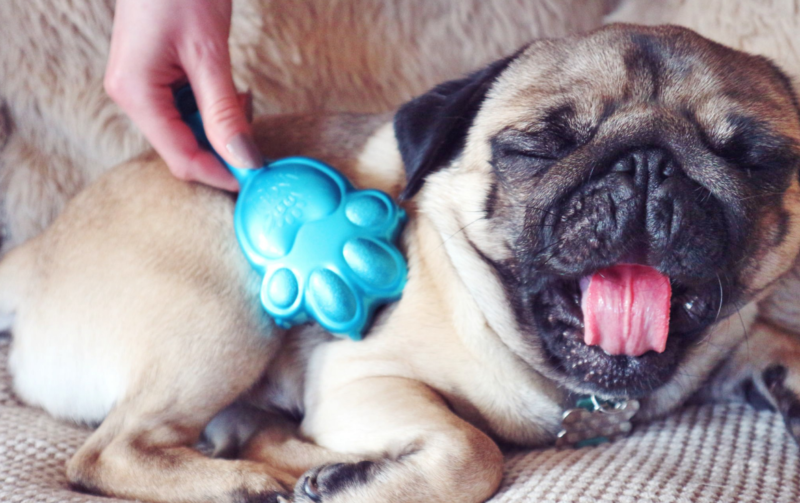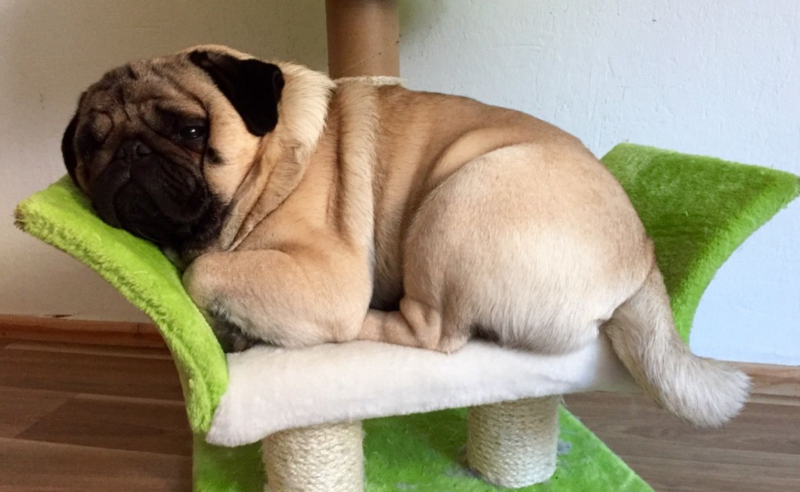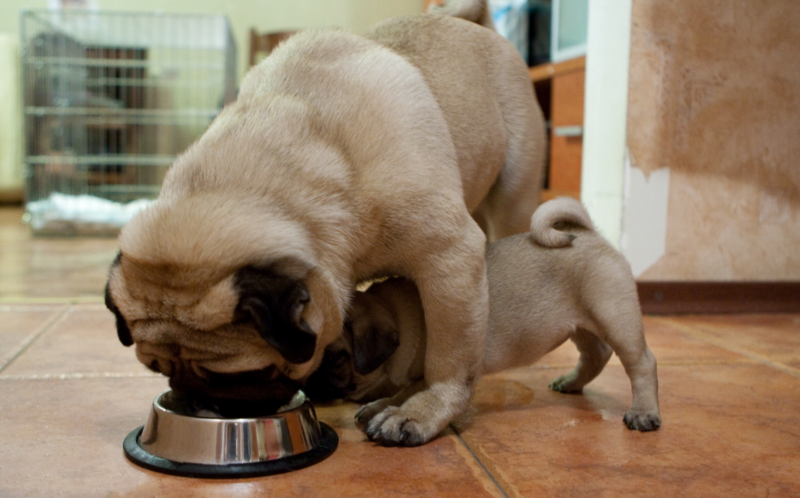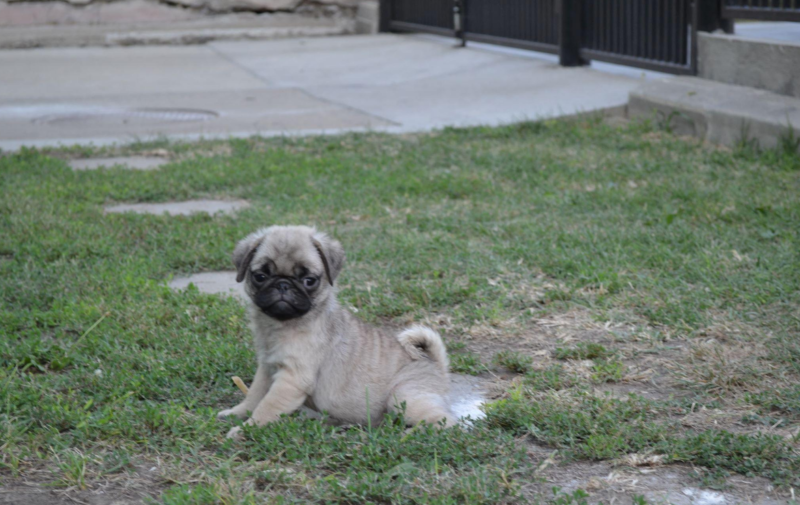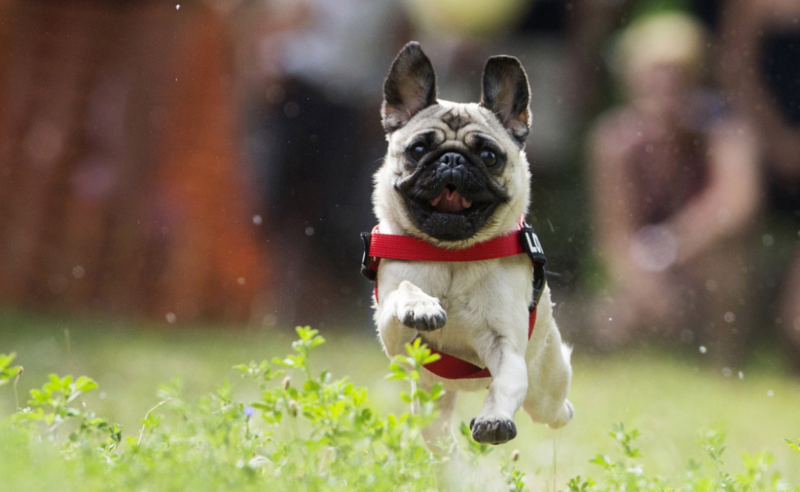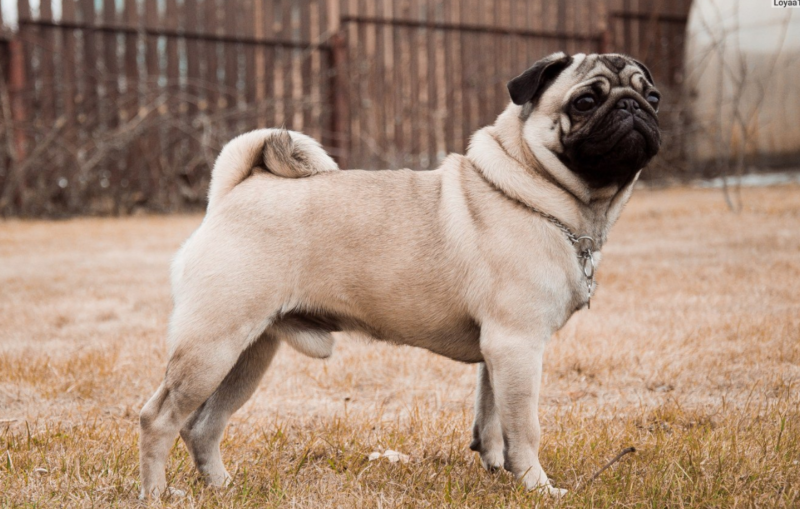Pugs are pretty cute little dogs. However, even such a small breed requires attention and some personal care. The owners of these pets should figure out what kind of care is required for a pug living within the apartment, and how to monitor it so that it feels good and does not cause any particular trouble to the owners.
Material Content:
Description and characteristics of the breed
Pugs are by nature very friendly and strongly attached to their owners. Their weight is usually about 5-8 kg. Color is most often black, silver, beige (apricot). They are not fluffy, but their coat is soft, shiny and not very long. Life expectancy is approximately 12-15 years.
Note. In general, despite their short stature, they have a compact and muscular physique.
Pug dogs adore children and are infinitely affectionate with them, which is undoubtedly good for families with babies. The great activity and injustice of the pets make them themselves look like a small, curious and very active child, which cannot but be indifferent.
They are distinguished by kindness and devotion. Such a dog can not be left alone for a long time, otherwise it will be very bored and homesick.
Nevertheless, the pug is very persistent in character. If he needs something, he will do everything possible to attract the attention of the owner, and will not leave him alone until he receives what he wants. This speaks of the mind and wits of the animal.
All About Pug Care
So, the decision to buy a dog was made, but how to care for a pug puppy? The main rule when caring for a pug is to carefully monitor the dog's hygiene and eye condition.
Important.This breed is most susceptible to such a disease as corneal erosion.
Also, due to its specific structure of the head, the animal may have difficulty breathing.
Owners should follow a few simple recommendations:
- try not to play active games with the animal for too long so that it does not get tired of running fast;
- Do not keep the pet in the sun or in a poorly ventilated area for a long time.
But at the same time, the dog needs moderate physical exercises and loads, because pugs are prone to obesity.
Follow the hygiene of the pet as follows:
- after each walk, wash the paws and genitals of the dog;
- to bathe completely no more than once a month (and preferably every 2 months), be sure to use a special shampoo;
- comb out the wool and look after it;
- if necessary, cut claws with a claw;
- brush your ears and teeth.
Pugs should be brushed with a natural bristle brush. It is enough to do this 2 times a month, after the procedure, wipe with a special cloth or a mitten.
You can brush your teeth with a regular toothbrush dipped in a weak solution of baking soda. Ears should be cleaned with cotton buds, which should be moistened with a special lotion for cleaning the ears of pets.
It is better to accustom a dog to clipping a dog from childhood, then she will get used to it and will not be afraid of this procedure in the future.
In hot weather, wipe the folds on the face with a cotton swab dipped in an antiseptic every day to avoid diaper rash and irritation. In winter, such a procedure is enough to carry out 1-2 times a week to remove dirt and accumulated subcutaneous fat.
Maintenance in the apartment
Keeping a pug in an apartment does not require too much effort or special conditions. The pet will feel comfortable even in a small room, because it is small in size - it does not need a huge space, unlike animals of large breeds.
Such a small dog can even be trained to relieve themselves on a tray. This will significantly save time and reduce stress for the pet from water procedures after a walk, which are necessary, as mentioned earlier.
If there are small children in the family, then you need to ensure that the child does not miss the dog’s toys and vice versa. Also, the pet should have its own place and its own separate bed. It is undesirable to teach a pug to sleep in the same bed with the owners, as it molts a lot.
Note. Due to molting, one must not forget to regularly clean the dog bed from wool.
Food
Pug dogs tend to suffer from obesity, allergies, and digestive upsets.
Small puppies need to be fed 4-6 times a day in small portions. At the age of six months - 3 times a day. When the puppy reaches 8 months, the number of meals is reduced to two.
There are two food options: natural, cooked at home, and special purchased food (and exclusively premium).
From natural you can give the following products:
- lean beef, chicken or rabbit;
- boiled, boneless marine fish (halibut, cod);
- heart, liver, ventricles;
- rice, oat or buckwheat;
- kefir, cottage cheese, fermented baked milk;
- unrefined sunflower or olive oil.
If the pug is fed with natural food, then it should only be at room temperature. Also, the dog needs to select vitamins and mineral supplements with the help of a veterinarian.
When eating ready-made food, it is also advisable to consult a specialist so as not to make a mistake with the choice. For pugs, food should be only premium, and preferably super-premium. You need to buy it in a sealed package, and not by weight. When feeding industrial food, vitamins do not need to be additionally given.
Walks
For walking you should purchase the following: a collar or harness, a leash and a muzzle. You can start walking with a dog already from 2-3 months.This is the end date of quarantine after a course of necessary vaccinations.
Up to 7 months, several walks up to 10-15 minutes will be enough, at the age of 7-9 months, 3-4 exits to the street for 20 minutes will suffice, for older animals - 2 times for 30-40 minutes.
Too overload the pet during walks is not worth it. It is enough to do a few circles around the house, and once a week go to the platform for animals. But load the pet for longer than 30 minutes. not allowed.
In the summer, you should be in the sun for no longer than 10 minutes. and always have a bottle of water with you. For bad or rainy weather, you can buy light and waterproof suits, and for winter - warmed jackets so that the dog does not freeze and get wet.
How to train and raise a dog
It is necessary to educate a puppy literally from the first days of his appearance in the family, not to spare any effort or time on this. It is necessary to show the dog that the most important thing in the house is the owner, he should be obeyed and respected.
It is also advisable to train the pet to respond to its nickname so that it understands and perceives when it is addressed or simply called.
At first, the puppy will need constant attention and care, therefore it is better to take the dog during the holidays, when it is possible to be at home as much as you like.
You should not raise a pet with screams and rudeness. It is necessary to explain to the animal everything calmly, but persistently, until it succeeds in achieving the desired. Do not forget, with the advent of successes, to encourage a puppy with some kind of delicacy or stroking.
Although a pug is a small dog, it must also be trained. For such a breed, the most effective methods are promotion and associative communication. That is, in order to accustom a pet to a place, it is necessary whenever it fits somewhere, take it to your bed. At the same time, saying aloud that here is his place. After several such procedures, the dog will understand what they want to explain to her.
It is best to teach a pug standard commands: “sit,” “lie,” “cannot,” “fu,” “place,” “come to me.”
Especially important is the command "not" so that the puppy does not spoil some things in the apartment, as well as "to me." If on a walk he suddenly runs away too far, then after hearing iconic phrases, he will return back to the owner.
Breed-specific diseases
As mentioned earlier, pug dogs are prone to obesity, suffer from allergies and infectious eye diseases, and may have problems with skin condition and breathing.
Therefore, in order for the dog to feel good, it must be carefully looked after. A well-composed menu, timely vaccinations, regular walks and hygiene rules will help.
At the slightest change in the behavior of the pet or getting injured, you should not treat the animal yourself, you need to seek help from a specialist as soon as possible.



